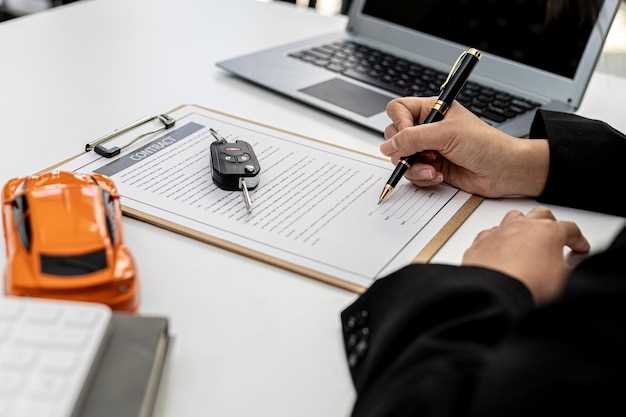
When it comes to selling a used motorcycle, proper inspection and prep are essential for ensuring a seamless transaction. A well-prepared motorcycle not only attracts more potential buyers but also increases your chances of achieving a favorable sale price. This checklist serves as a comprehensive guide to help you navigate the selling process with confidence and efficiency.
Before putting your motorcycle on the market, conducting a thorough inspection is crucial. This involves checking the mechanical components, ensuring that the tires are in good condition, and confirming that all lights and indicators are functioning properly. Additionally, consider giving your bike a good cleaning to enhance its visual appeal. Buyers are more likely to be impressed by a well-maintained motorcycle that looks and feels ready for the road.
Once your bike passes the inspection, the next step is prep. This encompasses gathering all necessary documents, such as the title, maintenance records, and any warranties that may still be in effect. Having everything organized will not only expedite the sale but also foster trust with potential buyers. By being well-prepared and transparent about the condition and history of your motorcycle, you pave the way for a smooth and successful sale.
Preparing Your Motorcycle for Inspection: Key Steps
Ensuring that your motorcycle is ready for inspection is crucial for a smooth sale process. Start by giving your bike a thorough cleaning. Wash the exterior, including the wheels and undercarriage, to present it in the best possible condition. A clean motorcycle not only looks appealing but also allows potential buyers to see any issues more clearly.
Next, check all fluid levels, including oil, brake fluid, and coolant. Make sure these fluids are at the correct levels and that there are no leaks. Low or dirty fluids can raise red flags during an inspection. Additionally, inspect brake pads, tires, and lights for wear and functionality. Replace any worn components to ensure safety and performance.
Review the motorcycle’s maintenance history. Having records available can instill confidence in buyers. If there have been any recent repairs or servicing, document them clearly. Make sure the maintenance schedule is up to date and that all necessary services are completed.
Examine the electrical system. Ensure that all lights, indicators, and signals are functioning properly. Issues with electrical components can be a deal-breaker for potential buyers. Additionally, check the battery for corrosion and ensure it is properly secured.
Lastly, perform a test ride to identify any potential issues. Pay attention to any unusual sounds, vibrations, or handling problems. Address any concerns before presenting your motorcycle for inspection. By being thorough in your prep work, you facilitate a more favorable inspection process and increase your chances of a successful sale.
Essential Documents and Information to Gather for Buyers

When selling a motorcycle, it is crucial to prepare and organize the necessary documents and information to ensure a smooth transaction. This not only instills confidence in potential buyers but also streamlines the inspection process. Below are the key items you should gather:
1. Title of the Motorcycle: Ensure you possess the original title, as this serves as proof of ownership. If there is an outstanding loan, contact your lender for the proper procedures to transfer the title.
2. Bill of Sale: Prepare a bill of sale that details the transaction, including the sale price, date, and both the seller’s and buyer’s information. This document serves as a receipt and is often required by local authorities for registration.
3. Maintenance Records: Compile all service records and receipts for maintenance and repairs. This documentation provides the buyer with insight into the motorcycle’s history and helps establish trust in the condition of the bike.
4. Inspection Report: If you have had the motorcycle inspected recently, include the inspection report. An up-to-date report can reassure potential buyers that the motorcycle is in good condition and free from significant issues.
5. Owner’s Manual: Providing the original owner’s manual offers added value to the buyer, as it contains essential information about the motorcycle’s specifications and maintenance guidelines.
6. Registration Information: Have the current registration ready to show that the motorcycle is legally registered. This can also help in addressing any buyer concerns about the legality of the sale.
7. Vehicle Identification Number (VIN): Be ready to provide the VIN to potential buyers. They may want to use it to check the motorcycle’s history, including any accidents or title issues.
Gathering these essential documents and information not only aids in the inspection process but also facilitates a transparent negotiation, ultimately leading to a successful sale. Being prepared reflects professionalism and enhances buyer confidence, making the transaction smoother for both parties.
Tips for Negotiating the Sale and Closing the Deal

Negotiating the sale of your motorcycle can significantly impact the final price and overall satisfaction of the transaction. Here are essential tips to help you navigate this process effectively.
1. Be Prepared: Before entering negotiations, ensure that your motorcycle has undergone a thorough inspection. A well-maintained bike with all necessary repairs completed can justify a higher asking price and help close the deal quickly.
2. Know Your Value: Research comparable motorcycles to understand the market value of your bike. Gather data on similar models’ selling prices to give you a strong foundation during negotiation. This knowledge will empower you and allow you to negotiate confidently.
3. Set a Firm Price: Determine your lowest acceptable price before negotiating. This “walk-away price” should reflect your motorcycle’s value but also leave room for negotiation. Start with a slightly higher asking price to give yourself negotiating space.
4. Highlight Unique Features: During discussions, emphasize any unique features or upgrades your motorcycle has. If you’ve recently completed any pre-sale prep work, such as detailing or mechanical improvements, make sure to mention these benefits to increase perceived value.
5. Listen to the Buyer: Pay attention to the buyer’s concerns and interests. Understanding their perspective can provide you with valuable insights that can facilitate a smoother negotiation process and help you address any hesitations they might have.
6. Be Willing to Compromise: Negotiation often involves a give-and-take approach. Consider flexible terms such as offering a warranty on specific parts or including accessories to sweeten the deal without significantly lowering the price.
7. Create a Sense of Urgency: If appropriate, inform potential buyers that there’s interest from other parties. This tactic can motivate them to finalize the deal more quickly to avoid losing out on the motorcycle.
8. Close with Confidence: Once the terms are agreed upon, finalize the sale promptly. Prepare necessary documents and payment options ahead of time to ensure a smooth transaction process. A professional closing can leave a lasting positive impression on the buyer.
By employing these strategies during the negotiation process, you can enhance your chances of making a successful sale while ensuring both you and the buyer feel satisfied with the outcome.





